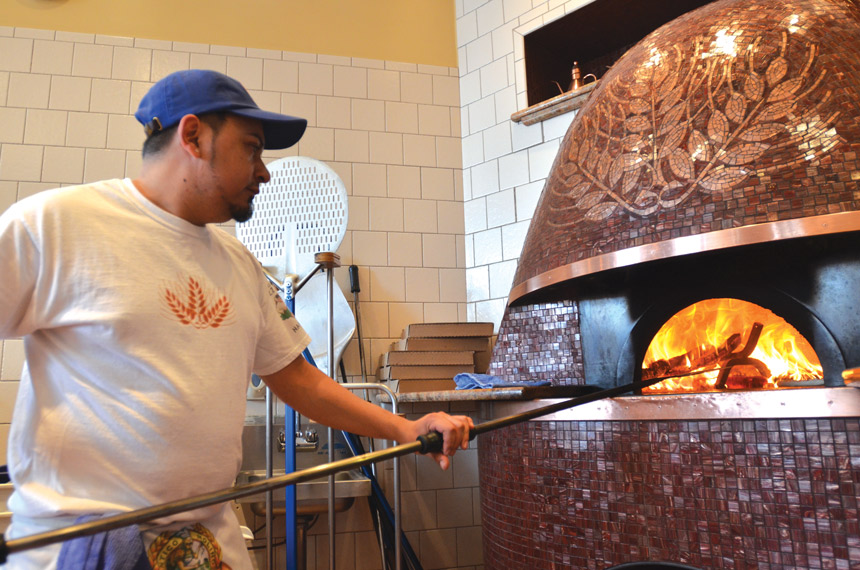Which pizza peel is right for your pizzeria?
First off, peels are often referred to as paddles. And based on their look, I get that. However, the reason they are called ‘peels’ is because they help you peel the pizzas off of the stones in your ovens or off your workstations and into your ovens. There are several types of pizza peels on the market. This month and next month, I’m going to offer you some brief descriptions.

Tony Gemignani
• Palenttino “out peel”. This is considered your out peel and sometimes is referred to by other nicknames, like Banjo or Pallino. These peels are used for taking pizzas out of your wood oven and maneuvering them within. The small head allows you to turn your pizzas in tight areas with ease. The head size can mostly vary from five to 10 inches. Typically, they are made of stainless steel, and sizes of the shaft vary. The varying lengths will allow you to purchase the correct size for the depth of your oven. The head can come perforated or solid. I prefer perforated because it is easier to slide under your pizzas, especially in a wood-fire oven, and excess debris will or can come off of the bottom of your pizza when taking it out of the oven. If used improperly, these peels can warp in your high-heat oven. So use this tool correctly and don’t leave it sitting in your oven. Do not use it to move wood or coals because it will also misshape or bend. Look for palenttinos that have a sliding grip (which makes it easier to work and maneuver pizzas in your oven). Most of these peels are made in Italy and are now available nationwide.
• A solid metal “out peel” with no sliding grip that has a six- to eight-inch head can be very heavy. I primarily use these peels to move wood or coal so that I don’t damage my other palenttino that is thin and light weight. These peels are very durable and can also be made of titanium. Because of the weight, I feel this peel can be strenuous when working long hours. Once again, I recommend using it for wood and coal placement only as a utility peel.
• Perforated “in peel”. These can be anodized and/or made of aluminum. Consider your in-peel with a head that ranges between 12 to 20 inches wide and can come round, square or slightly rectangular. These are great for leaving flour, semolina or cornmeal on the work surface and not in your oven. Thin and lightweight, a portion of these peels can also be carbon fiber. These peels are sometimes referred to as “banjo style” peels. The round head can make it easier when landing your pizzas into your oven for an easier release. They also can be more precise than a rectangular head.
Look for this type of peel where the head can detach. Detachable heads make it easier to clean as you can put them in the dishwasher. When the time comes to order a new one, shipping will be cheaper since you will not need to order the shaft. Some of these peels can be purchased with special coating like GHA (golden hard anodizing), so models can vary. With a perforated peel, less excess grains going into your oven will mean less smoke, a cleaner oven surface and a better tasting pizza. Excess grains on the bottom of your pizza that burn make your pizzas have a bitter flavor.
Miss Part One. Read Tools of the Trade
RESPECTING THE CRAFT features World Pizza Champion Tony Gemignani, owner of Tony’s Pizza Napoletana in San Francisco and Pizza Rock in Sacramento. Tony compiles the column with the help of his trusty assistants, Laura Meyer and Thiago Vasconcelos. If you have questions on any kitchen topic ranging from prep to finish, Tony’s your guy. Send questions via Twitter @PizzaToday, Facebook (search: Pizza Today) or e-mail [email protected] and we’ll pass the best ones on to Tony.
>> Explore answers to more common pizza dough questions in Troubleshooting your Pizza Dough: What’s wrong with my pizza dough? <<








